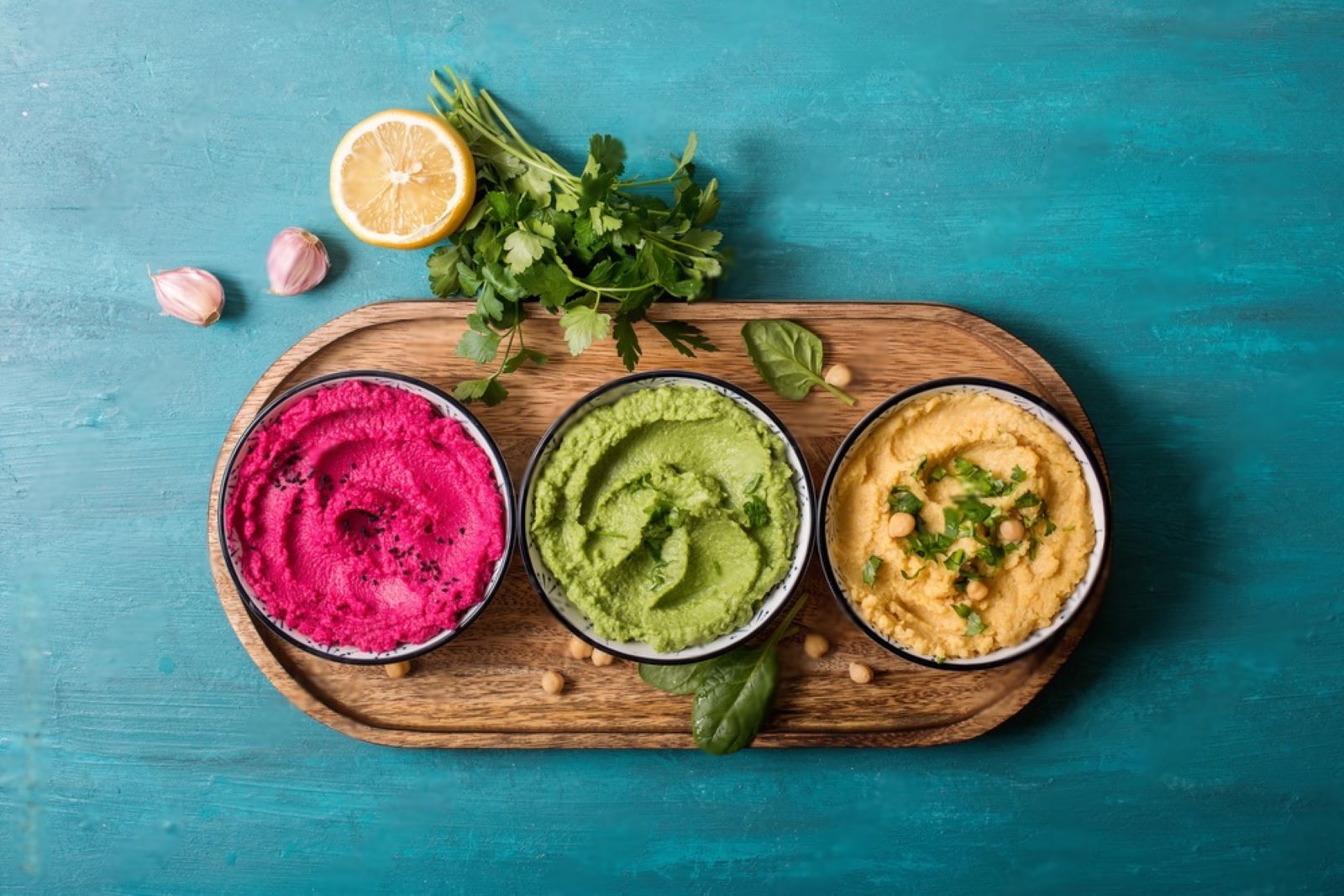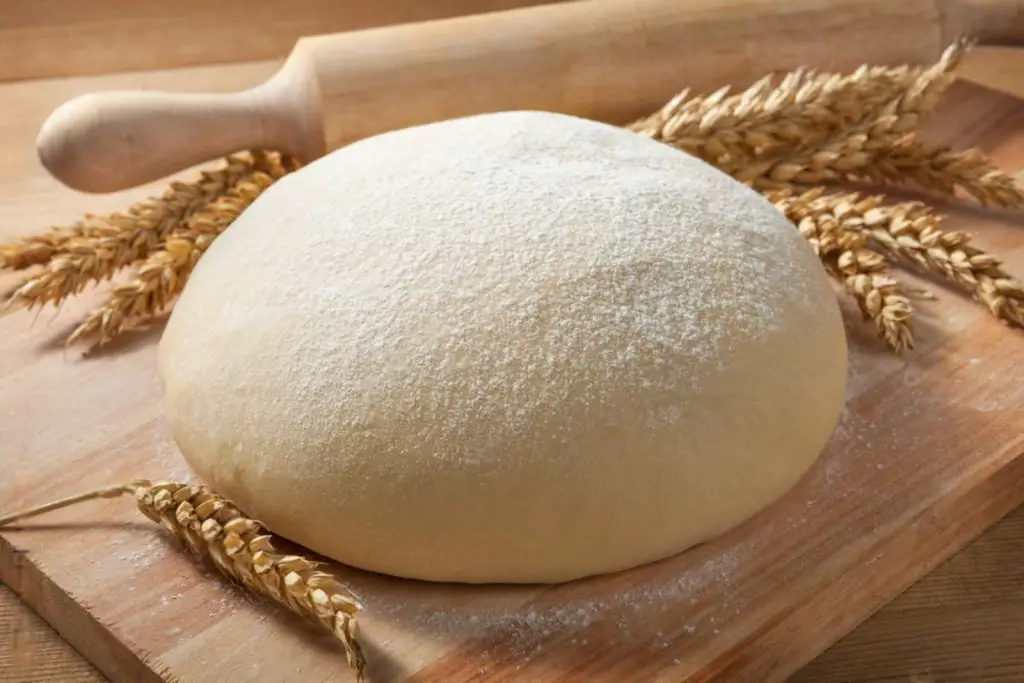
Hummus is a versatile and delicious Middle Eastern dip made from chickpeas, tahini, lemon juice, and garlic. It is loved by many for its creamy texture and flavorful taste. While hummus is typically enjoyed fresh, there are times when you may have leftovers or want to prepare a larger batch in advance. Freezing hummus can be a great solution to extend its shelf life and ensure you always have some on hand. In this article, we will provide a step-by-step guide on how to freeze hummus while maintaining its smooth consistency and delightful flavor.
Here’s a guide on how to freeze hummus:
Step 1: Choose the right container
When it comes to freezing hummus, selecting the right container is crucial to maintaining its quality and preventing freezer burn. A freezer-safe container that is airtight and leak-proof is essential in preserving the taste and texture of the hummus.
Mason jars are a popular choice for freezing hummus due to their excellent sealing properties. The tight-fitting lids create a strong barrier against air and moisture, keeping the hummus fresh and preventing any unwanted flavors from seeping in. Additionally, the glass material of Mason jars helps to maintain a consistent temperature during freezing, further safeguarding the hummus’s quality.
Plastic containers with tight-fitting lids are also suitable options for freezing hummus. Look for containers specifically labeled as freezer-safe to ensure they can withstand the low temperatures without cracking or becoming brittle. These containers provide a reliable seal that prevents air from entering and freezer odors from affecting the hummus.
The key is to choose containers that are specifically designed for freezing and have lids that create an airtight seal. This seal prevents the hummus from drying out or absorbing any odors from other foods in the freezer. By using an airtight and leak-proof container, you can be confident that your frozen hummus will maintain its freshness and delicious taste until you’re ready to enjoy it.
Will freezing hummus affect its taste or texture?
Freezing hummus can slightly affect its taste and texture. The texture may become slightly grainier or watery after thawing, as the freezing process can cause some separation. Additionally, the flavor of hummus may be slightly altered after freezing and thawing. However, many people find that the overall taste and texture of frozen hummus are still enjoyable, especially when used as a dip or spread.
Step 2: Portion the hummus
When freezing hummus, it’s beneficial to divide it into smaller portions based on your needs. Freezing it in individual servings offers several advantages, including easy thawing and avoiding the need to defrost more than necessary.
By portioning the hummus before freezing, you create convenient serving sizes that can be easily thawed and consumed. This is particularly useful if you frequently use hummus as a dip or spread, as it allows you to defrost only the amount you need for a single serving or meal. Instead of defrosting an entire container and potentially wasting unused portions, you can take out and thaw just the desired portion, reducing food waste.
Dividing the hummus into smaller portions also accelerates the thawing process. Smaller quantities thaw more quickly than a large block of frozen hummus, allowing you to enjoy your favorite dip in a shorter amount of time. This is especially helpful when you want to enjoy hummus spontaneously or have unexpected guests.
Additionally, freezing hummus in individual servings maintains the overall quality of the dip. Each portion is individually sealed, reducing the exposure to air and minimizing the risk of freezer burn. This helps to preserve the creamy texture and flavor of the hummus, ensuring that it tastes just as delicious after thawing as it did before freezing.
When portioning the hummus, consider the typical serving size you would consume and divide the batch accordingly. You can use small airtight containers, silicone molds, or even ice cube trays for portioning. Once the hummus is divided, place each portion into separate containers, making sure to leave some headspace to accommodate any expansion during freezing.
Step 3: Leave headspace
When freezing hummus, it’s crucial to leave some headspace in the containers to allow for expansion during the freezing process. As hummus freezes, it may slightly expand, and providing sufficient room for this expansion is essential to avoid any mess or potential damage to the container.
Hummus contains water content, and when water freezes, it expands. If there isn’t enough space in the container to accommodate this expansion, it can lead to pressure build-up and cause the container to crack or burst open. Not leaving enough headspace can result in a messy situation in your freezer and potentially contaminate other items stored nearby.
By leaving adequate headspace, you give the hummus room to expand as it freezes. This helps to prevent the container from breaking and ensures that the hummus remains safely contained without any leaks or spills. The recommended amount of headspace is typically about 1/2 inch (1.3 cm) to 1 inch (2.5 cm) at the top of the container.
It’s important to note that the exact amount of expansion may vary depending on the specific composition of the hummus and its water content. To be on the safe side, it’s better to leave a bit more headspace than not enough, especially if you’re unsure of the exact expansion rate.
When filling the containers, make sure to smooth the surface of the hummus and level it off before sealing the container. This helps to create an even surface and minimize any air pockets that could potentially affect the quality of the frozen hummus.
Taking the time to leave adequate headspace when freezing hummus ensures a trouble-free freezing process. It safeguards both the integrity of the container and the quality of the hummus, allowing you to enjoy a delicious and mess-free hummus experience when it’s time to thaw and indulge.
Step 4: Seal the containers
After portioning and filling the containers with hummus, it is crucial to seal them tightly to create a secure and airtight environment. Proper sealing is essential for preventing freezer burn and preserving the flavors and quality of the hummus during the freezing process.
Freezer burn occurs when moisture in the food evaporates and forms ice crystals on the surface. It can result in a dry, discolored appearance and negatively impact the taste and texture of the hummus. By tightly sealing the containers, you create a barrier that helps prevent the escape of moisture and the entry of dry air, reducing the likelihood of freezer burn.
An airtight seal is equally important in preserving the flavors of the hummus. It prevents the hummus from absorbing odors and flavors from other foods in the freezer, ensuring that it maintains its original taste and freshness. Without a proper seal, the hummus can develop off-flavors and lose its appealing qualities.
To seal the containers effectively, ensure that the lids or caps are tightly secured. Depending on the type of container you are using, this may involve twisting the lid until it locks into place, snapping the lid shut, or pressing down firmly on the container to create a tight seal. Check that there are no gaps or openings that could allow air or moisture to enter.
If using containers with screw-on lids, you can further enhance the seal by applying a layer of plastic wrap or aluminum foil over the container opening before screwing on the lid. This provides an extra layer of protection against air and moisture.
Once the containers are sealed, it’s a good practice to give them a gentle shake or tilt to ensure that the hummus is evenly distributed within the container. This helps prevent any separation or uneven freezing that could occur during storage.
Step 5: Label and date
Labeling and dating the containers of frozen hummus is an important step to help you keep track of the storage time and ensure that you prioritize consuming the older batches first. This simple practice can help maintain food safety and quality while preventing food waste.
By using a permanent marker or freezer-safe labels, clearly write the date of freezing on each container. This allows you to easily identify how long the hummus has been in the freezer. Keeping track of the storage time is crucial because frozen hummus, like any other food, has a limited shelf life.
Labeling the containers with the freezing date helps you maintain an organized freezer and enables you to rotate your food supply effectively. By consuming the older batches first, you can ensure that none of the hummus goes past its recommended storage duration, preserving its quality and flavor.
Additionally, knowing the date of freezing allows you to make informed decisions about food safety. While frozen hummus can remain safe to eat indefinitely when stored at 0°F (-18°C), the quality may deteriorate over time. It’s generally recommended to consume frozen hummus within 3 to 6 months for the best flavor and texture.
Having the date clearly marked on the containers also helps prevent confusion and eliminates the need for guesswork. You won’t have to wonder how long a particular batch has been in the freezer, reducing the risk of accidentally consuming hummus that has been stored for too long.
To further enhance organization, you can also include additional information on the label, such as the quantity of hummus in the container or any specific flavor variations you may have frozen. This can be especially helpful if you have different flavors or variations of hummus stored together.
Step 6: Store in the freezer
Once you have sealed and labeled the containers of hummus, it’s important to store them properly in the freezer. By placing the sealed containers in the coldest part of your freezer, preferably away from the door, you can maintain a consistent freezing temperature and preserve the quality of the hummus.
The coldest part of the freezer is typically towards the back or bottom, as these areas are less susceptible to temperature fluctuations when the freezer door is opened and closed. By storing the hummus in this area, you create a more stable environment with a constant freezing temperature, which is crucial for maintaining the texture, flavor, and overall quality of the hummus.
Consistent freezing temperature is essential because temperature fluctuations can negatively impact the frozen hummus. Fluctuations can cause partial thawing and refreezing, leading to changes in texture and potentially compromising the flavor and quality of the hummus. By storing the hummus in the coldest part of the freezer, you minimize the risk of these temperature fluctuations and help ensure that the hummus remains in optimal condition.
Additionally, storing the hummus away from the door helps prevent exposure to warm air every time the freezer is opened. The door is frequently opened and closed, leading to fluctuations in temperature near the door area. Placing the hummus away from the door minimizes its exposure to these temperature changes, contributing to better preservation.
To maximize space and organization, you can consider stacking the containers, but make sure they are stable and won’t topple over. If stacking, it’s a good practice to leave some space between containers to allow for proper air circulation, ensuring even freezing and preventing any containers from sticking together.
Remember to avoid overcrowding the freezer, as this can restrict airflow and impede proper freezing. Leave some space around the containers to allow cold air to circulate freely, helping to maintain a consistent freezing temperature.
How long can I keep frozen hummus in the freezer?
Frozen hummus can be safely stored in the freezer for up to 3-4 months. While it may still be safe to consume beyond that timeframe, the quality and flavor may gradually deteriorate over time. To maintain the best taste and texture, it’s recommended to consume the frozen hummus within the first few months of freezing. Be sure to label the container with the freezing date to keep track of its storage duration.
Step 7: Thaw and consume
When you’re ready to enjoy your frozen hummus, proper thawing is essential to bring it back to its smooth and creamy texture. There are two primary methods for thawing frozen hummus: refrigerator thawing and using the defrost setting on your microwave. Each method has its advantages, and it’s important to follow the appropriate steps for safe and optimal results.
- Refrigerator Thawing:
To thaw the frozen hummus in the refrigerator, simply transfer a container from the freezer to the refrigerator and allow it to thaw overnight. This method is the most gentle and ensures a gradual thaw, which helps maintain the texture and flavor of the hummus.
Thawing in the refrigerator requires some patience, as it can take several hours or overnight for the hummus to fully thaw. However, this slow thawing process allows the hummus to retain its smooth consistency and prevents any potential texture changes that can occur with rapid thawing.
Once the hummus is fully thawed, give it a good stir to restore its smooth texture. The freezing process may cause some separation, but stirring will help reincorporate any separated liquids and bring the hummus back to its original creamy state.
- Microwave Thawing:
If you need to thaw the hummus quickly, you can use the defrost setting on your microwave. However, it’s important to exercise caution when using this method to avoid overheating or altering the texture of the hummus.
When using the defrost setting, follow the manufacturer’s instructions for your specific microwave model. It’s advisable to thaw the hummus in short intervals, such as 30-second increments, and check and stir it frequently. This prevents overheating or hot spots and ensures even thawing throughout the container.
Be mindful not to overheat the hummus, as excessive heat can cause it to become watery and affect the texture. The goal is to thaw it just enough to reach a smooth and spreadable consistency.
Regardless of the thawing method you choose, once the hummus is fully thawed, it is ready to be consumed. You can use it as a dip for vegetables, spread it on sandwiches or wraps, or incorporate it into your favorite recipes.
Remember to discard any thawed hummus that has been left at room temperature for more than two hours, as it may no longer be safe to consume. If you have leftover thawed hummus, you can store it in the refrigerator for a few days, but be mindful of its freshness and quality.
Other related questions
Can I refreeze previously thawed hummus?
It is generally not recommended to refreeze previously thawed hummus. When you thaw hummus, moisture can accumulate and the texture may change, affecting its quality. Refreezing can further degrade the taste and texture, resulting in a less desirable hummus. To prevent waste, it is best to thaw only the amount of hummus you plan to consume and avoid refreezing any leftovers.
How do I know if my frozen hummus has gone bad?
To determine if your frozen hummus has gone bad, you should rely on visual and sensory cues. Firstly, check for any signs of freezer burn, such as ice crystals or dry, discolored patches on the surface. Secondly, observe the texture of the hummus after thawing; if it appears grainy, watery, or separated, it may indicate spoilage. Lastly, trust your sense of smell and taste. If the hummus emits an off-putting odor or tastes noticeably sour, rancid, or different from its usual flavor, it’s best to discard it to avoid any potential foodborne illnesses.
Can I use frozen hummus with the fresh ones?
Yes, you can use frozen hummus alongside fresh hummus. When you thaw the frozen hummus, ensure it has reached the desired consistency and texture before using it. Once thawed, you can mix the frozen hummus with fresh hummus to combine flavors or use them separately based on your preferences. Just remember to store any leftovers properly to maintain their quality and avoid repeated thawing and refreezing.
Can I freeze homemade hummus?
Yes, you can freeze homemade hummus. Allow the homemade hummus to cool completely before transferring it to an airtight container or freezer-safe bag. Ensure the container is sealed tightly to prevent air exposure. Frozen homemade hummus can be stored for up to 3-4 months, but it’s recommended to consume it within the first few months for the best quality.
Can I freeze store-bought hummus?
Yes, you can freeze store-bought hummus. Transfer the store-bought hummus to an airtight container or freezer-safe bag, leaving some space for expansion. Seal it tightly and place it in the freezer. Frozen store-bought hummus can typically be kept for up to 3-4 months, but be sure to check the packaging for any specific instructions or recommendations from the manufacturer.
Can I freeze hummus with toppings or mix-ins?
It is generally not recommended to freeze hummus with toppings or mix-ins. Toppings and mix-ins such as herbs, vegetables, or oils can change in texture and quality when frozen and thawed. It’s best to add toppings or mix-ins to the hummus after thawing to ensure they retain their freshness and desired texture.








